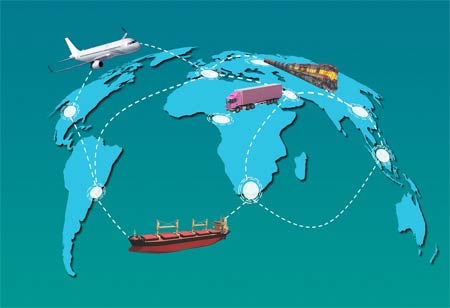THANK YOU FOR SUBSCRIBING
THANK YOU FOR SUBSCRIBING

By
Logistics Transportation Review | Wednesday, October 30, 2024
Stay ahead of the industry with exclusive feature stories on the top companies, expert insights and the latest news delivered straight to your inbox. Subscribe today.
Automated cranes and AI-powered systems are already being used to transfer containers seamlessly between ships and trucks.
Fremont, CA: Multimodal transportation is at the forefront of this transformation, which seamlessly integrates different modes of transport to create more efficient, sustainable, and connected logistics ecosystems. The evolution reshapes how goods and people move, unlocking new opportunities for businesses, consumers, and economies while accelerating the Industry 4.0 revolution. Next-gen multimodal transportation refers to using advanced technologies to connect and optimize various transportation modes in a cohesive network.
The result is a more agile, flexible, and sustainable transportation system that can quickly adapt to modern industry demands and consumer needs. Multimodal transport systems aim to streamline processes by utilizing the most efficient combination of transportation modes. Products might be transported by ship from a manufacturer to a port, transferred to a train for long-haul travel, and delivered to a customer by truck. The key to this next-generation approach lies in digital connectivity and automation, allowing for real-time tracking, data-driven decision-making, and improved coordination between different transport modes.
With AI and IoT sensor integration, companies can monitor the status of goods, vehicles, and infrastructure in real time. This visibility allows for predictive maintenance of vehicles and infrastructure, reducing downtime, preventing delays, and ensuring on-time deliveries. The optimization minimizes fuel consumption, reduces operational costs, and maximizes vehicle utilization. Automation and robotics streamline warehouse operations, enhance loading and unloading processes, and reduce manual labor, leading to faster turnover and significant cost savings.
Next-gen multimodal transportation is pivotal in addressing sustainability challenges. With increasing pressure to reduce carbon emissions, many industries seek ways to minimize their environmental footprint. By optimizing routes and consolidating cargo across multiple transportation modes, multimodal transport reduces fuel consumption and emissions, particularly when combined with energy-efficient transport modes like rail and electric vehicles. Smart transportation systems powered by IoT and AI help logistics companies track and reduce their carbon footprints.
Data is the foundation of transformation, and next-gen multimodal transportation leverages this through the seamless exchange of information across transport systems. It enables logistics operators and manufacturers to make data-driven decisions quickly and accurately. It enables predictive analytics, which helps companies anticipate future transportation needs and challenges, allowing them to adjust their logistics strategies accordingly. Advanced data analytics can help identify inefficiencies in the supply chain, paving the way for continuous improvement. Blockchain further enhances this by providing a secure and transparent way to track shipments and transactions across the supply chain.
Next-gen multimodal transportation is transforming logistics and operations and reshaping the workforce. Jobs in transportation and logistics are shifting from manual labor to more tech-oriented roles, such as data analysts, AI specialists, and automation engineers. The shift is leading to new training programs that equip workers with the skills necessary to thrive in an Industry 4.0 environment. Next-gen multimodal transportation is a critical accelerator of Industry 4.0, driving greater efficiency, sustainability, and innovation across global supply chains. Next-gen multimodal transportation will play an increasingly important role in defining the future of mobility and logistics.
I agree We use cookies on this website to enhance your user experience. By clicking any link on this page you are giving your consent for us to set cookies. More info





